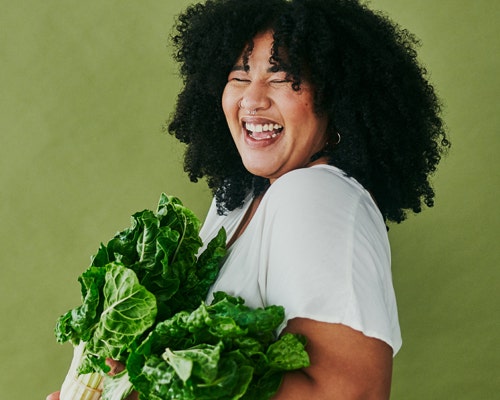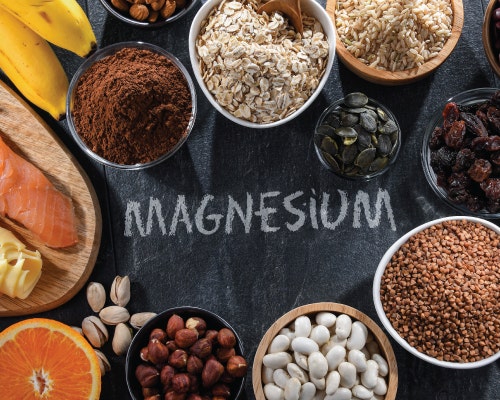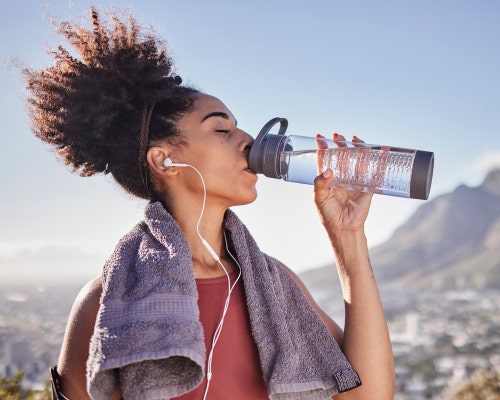Why Women Need More Iron Than Men
- 8/14/23


Have you ever wondered why most women’s multivitamins contain Iron, but men’s multivitamins don’t? Or perhaps you’ve noticed that the Recommended Dietary Allowance (RDA) for Iron is generally higher for women than men.
This has to do with the unique biological changes men and women go through during different stages of life. Understanding why our Iron needs differ and where to find this nutrient in your diet can help ensure you get enough.
What is Iron?
Iron is a mineral that is naturally occurring in some foods and fortified in others. It’s also available in supplemental form, either as a standalone supplement or as part of a multivitamin with minerals.
Iron is a critical component of hemoglobin, a protein in your red blood cells that transports oxygen from your lungs to all your tissues. Iron is also a component of myoglobin, a muscle protein that provides oxygen and helps support healthy connective tissue.
Other functions of Iron in the body include hormone synthesis and supporting physical growth, brain development, and the healthy function of cells.
Why Iron Needs Differ for Men and Women
The RDA for Iron is the same for males and females until age 14, when individuals enter adolescence. At this time, Iron requirements become higher for women than men and stay that way until age 50. Iron needs increase further for women during pregnancy in order to supply oxygen to the baby and support fetal growth and development.
Iron needs are higher for women for several decades to compensate for menstrual cycle losses, which begin in puberty and end in menopause. Each month that a female is not pregnant, her body releases the unfertilized egg, which results in blood loss at this point of the menstrual cycle.
Because so much Iron is stored in the blood, women lose Iron every month as part of menstruation. Every woman may experience a different amount of blood loss each month, as menstrual cycles are unique. This requires replenishment from diet and, potentially, supplementation.
Because males and postmenopausal women don’t menstruate, they do not lose their Iron stores on a regular basis. An Iron-rich diet alone can often meet basic Iron needs for these groups unless otherwise directed by a healthcare provider.
Sources of Iron
There are two types of Iron: heme Iron, which is predominantly found in animal-derived foods, and non-heme Iron, which is found in plants and Iron-fortified foods. Heme Iron is more bioavailable than non-heme Iron, so the Iron needs of vegetarians are 1.8 times higher than omnivores to make up for this difference.
Food
There are plenty of Iron-containing foods that can be incorporated into your diet. Some of the best sources include:
- Meat
- Seafood
- Poultry
- Beans
- Nuts
- Dark leafy greens
- Fortified grain products
- Soy foods like tofu and tempeh
- Tomato paste
- Mushrooms
- Lentils
To boost Iron absorption from foods, particularly non-heme Iron, pair them with a source of vitamin C at the same meal. Some vitamin C foods include tomatoes, strawberries, broccoli, bell peppers, and citrus fruits.
Supplements
If you generally don’t eat many Iron-rich foods or are concerned about your Iron intake, an Iron-containing supplement may be helpful. It’s best to speak with your doctor or registered dietitian to determine whether you’re meeting your Iron needs, which can be evaluated with a simple blood test.
Vitamin Code Womens Multi Plus Iron Gummies are one option for women looking for a complete multivitamin with minerals. One serving of gummies provides 9 mg of Iron or 50% of the RDA.
For women who are pregnant or planning to become pregnant, a prenatal vitamin with Iron, such as Vitamin Code Prenatal with Iron & Folic Acid Gummies, is an option. Each serving provides 27 mg of Iron, which is 100% of the RDA for pregnancy.
References
-
Iron Fact Sheet for Health Professionals. Office of Dietary Supplements. (n.d.). Updated 5 April 2022. Available from: https://ods.od.nih.gov/factsheets/Iron-HealthProfessional/
-
Miller EM. The reproductive ecology of Iron in women. Am J Phys Anthropol. 2016;159(Suppl 61):S172-S195. doi:10.1002/ajpa.22907
-
Heffernan A, Evans C, Holmes M, Moore J. The Regulation of Dietary Iron Bioavailability by Vitamin C: A Systematic Review and Meta-Analysis. Proceed Nutr Soc. 207;76(OCE4), E182. doi:10.1017/S0029665117003445





